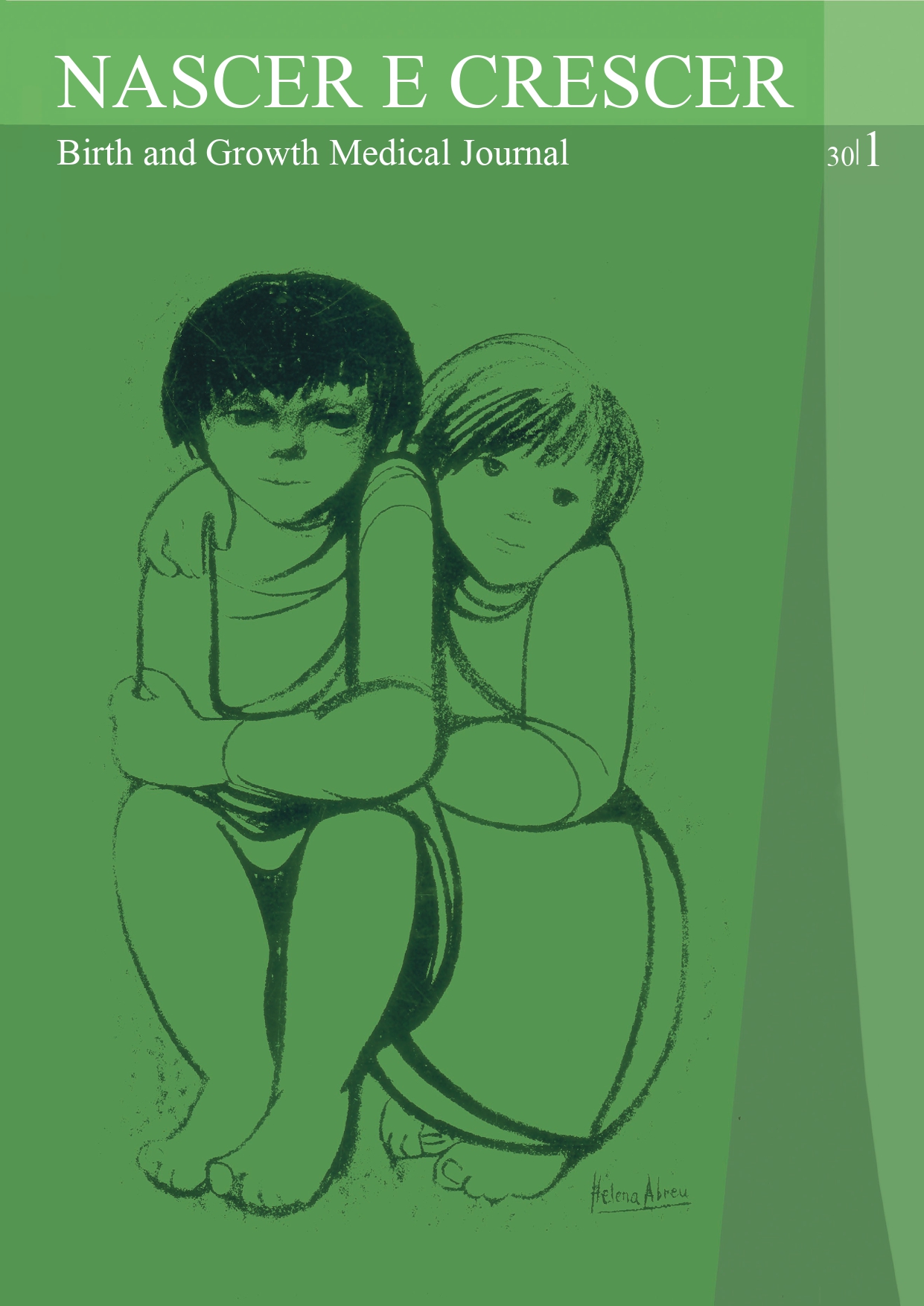Congenital candidiasis – a diagnostic challenge
DOI:
https://doi.org/10.25753/BirthGrowthMJ.v30.i1.20036Keywords:
candidiasis, invasive fungal diseases, neonateAbstract
Introduction: Congenital candidiasis is a rare intrauterine infection characterized by vesicular and pustular skin lesions appearing in the first six days of life.
Clinical case: The authors describe the case of a full-term infant presenting erythematous macules, vesicles and pustules involving the trunk and extremities and cervical burn-like dermatitis at birth. Mycological skin lesion culture was positive for Candida albicans. Blood culture was positive for methicillin-sensitive Staphylococcus aureus. After systemic antifungal and antibiotic therapy was started, the newborn remained asymptomatic with lesion improvement.
Discussion/ Conclusion: Herein is reported a case of congenital candidiasis in a full-term infant, with a successful recovery. The rarity of congenital candidiasis can lead to delayed diagnosis and unnecessary treatment. This case shows that fungal infection should be considered in the differential diagnosis of vesiculopustular skin lesions in neonates. Systemic therapy should be initiated if invasive candidiasis is suspected.
Downloads
References
Araujo T, Schachner L. Benign vesicopustular eruptions in the neonate. An Bras Dermatol. 2006; 81:359-66.
Mendling W, Brasch J. Guideline vulvovaginal candidosis (2010) of the German Society for Gynecology and Obstetrics, the Working Group for Infections and Infectimmunology in Gynecology and Obstetrics, the German Society of Dermatology, the Board of German Dermatologists and the German Speaking Mycological Society. Mycoses. 2012; 55:1–13.
Diana A, Epiney M, Ecoffey M, Pfister RE. “White dots on the placenta and red dots on the baby”: congential cutaneous candidiasis—a rare disease of the neonate. Acta Paediatr. 2004; 93: 996-1001.
Smith PB, Steinbach WJ. Candida Species. In: Long SS, Pickering LK, Prober CG, editors. Principles and Practice of Pediatric Infectious Diseases. 3rd ed. Elsevier Inc.; 2008. p. 1172-8.
Darmstadt GL, Dinulos JG, Miller Z. Congenital cutaneous candidiasis: clinical presentation, pathogenesis, and management guidelines. Pediatrics 2000; 105:438−44.
Kaufman DA, Coggins SA, Zanelli SA, Weitkamp JH. Congenital Cutaneous Candidiasis: Prompt Systemic Treatment Is Associated With Improved Outcomes in Neonates. Clin Infect Dis 2017; 64:1387-95.
American Academy of Pediatrics. Candidiasis In: Kimberlin DW, Brady MT, Jackson MA, Long SS, eds. Red Book: 2015 Report of the Committee on Infectious Diseases. 30th ed. Elk Grove Village, IL: American Academy of Pediatrics; 2015: p. 275-80.
Infectious Diseases Society of America. Clinical practice guidelines for the management of candidiasis: 2016 update by the Infectious Diseases Society of America. Clin Infect Dis. 2009; 48:503–35.
Downloads
Published
How to Cite
Issue
Section
License
Copyright (c) 2021 Sara Rolim, Joana Figueirinha, Cristina Miguel, Susana Lopes, Felisbela Rocha, Cecília Martins, Sónia Carvalho

This work is licensed under a Creative Commons Attribution-NonCommercial 4.0 International License.
Copyright and Authors' Rights
All articles published in Nascer e Crescer - Birth and Growth Medical Journal are Open Access and comply with the requirements of funding agencies or academic institutions. For use by third parties, Nascer e Crescer - Birth and Growth Medical Journal adheres to the terms of the Creative Commons License "Attribution - Non-Commercial Use (CC-BY-NC)".
It is the author's responsibility to obtain permission to reproduce figures, tables, etc. from other publications.
Authors must submit a Conflict of Interest statement and an Authorship Form with the submission of the article. An e-mail will be sent to the corresponding author confirming receipt of the manuscript.
Authors are permitted to make their articles available in repositories at their home institutions, provided that they always indicate where the articles were published and adhere to the terms of the Creative Commons license.


